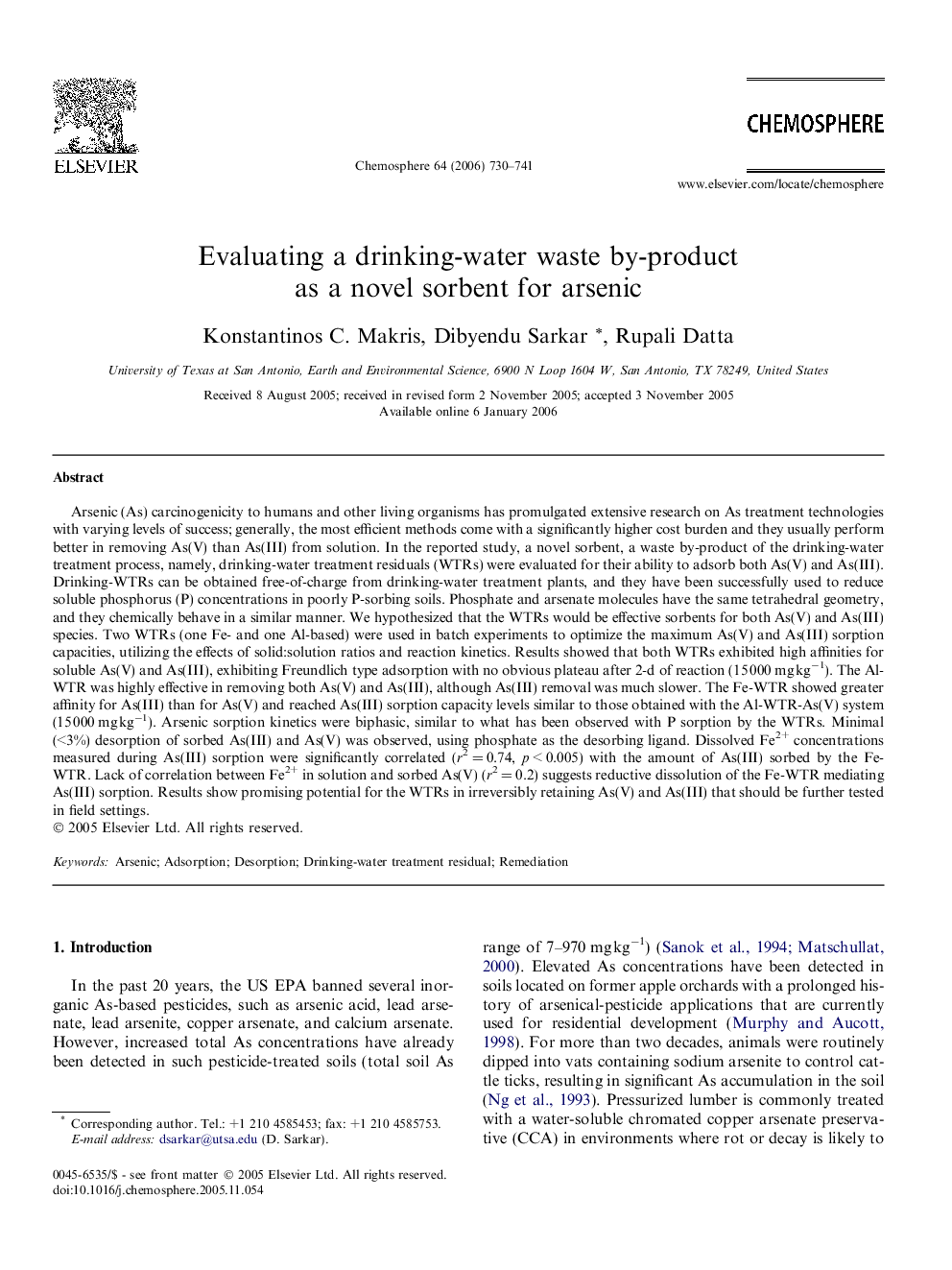| Article ID | Journal | Published Year | Pages | File Type |
|---|---|---|---|---|
| 4415704 | Chemosphere | 2006 | 12 Pages |
Arsenic (As) carcinogenicity to humans and other living organisms has promulgated extensive research on As treatment technologies with varying levels of success; generally, the most efficient methods come with a significantly higher cost burden and they usually perform better in removing As(V) than As(III) from solution. In the reported study, a novel sorbent, a waste by-product of the drinking-water treatment process, namely, drinking-water treatment residuals (WTRs) were evaluated for their ability to adsorb both As(V) and As(III). Drinking-WTRs can be obtained free-of-charge from drinking-water treatment plants, and they have been successfully used to reduce soluble phosphorus (P) concentrations in poorly P-sorbing soils. Phosphate and arsenate molecules have the same tetrahedral geometry, and they chemically behave in a similar manner. We hypothesized that the WTRs would be effective sorbents for both As(V) and As(III) species. Two WTRs (one Fe- and one Al-based) were used in batch experiments to optimize the maximum As(V) and As(III) sorption capacities, utilizing the effects of solid:solution ratios and reaction kinetics. Results showed that both WTRs exhibited high affinities for soluble As(V) and As(III), exhibiting Freundlich type adsorption with no obvious plateau after 2-d of reaction (15 000 mg kg−1). The Al-WTR was highly effective in removing both As(V) and As(III), although As(III) removal was much slower. The Fe-WTR showed greater affinity for As(III) than for As(V) and reached As(III) sorption capacity levels similar to those obtained with the Al-WTR-As(V) system (15 000 mg kg−1). Arsenic sorption kinetics were biphasic, similar to what has been observed with P sorption by the WTRs. Minimal (<3%) desorption of sorbed As(III) and As(V) was observed, using phosphate as the desorbing ligand. Dissolved Fe2+ concentrations measured during As(III) sorption were significantly correlated (r2 = 0.74, p < 0.005) with the amount of As(III) sorbed by the Fe-WTR. Lack of correlation between Fe2+ in solution and sorbed As(V) (r2 = 0.2) suggests reductive dissolution of the Fe-WTR mediating As(III) sorption. Results show promising potential for the WTRs in irreversibly retaining As(V) and As(III) that should be further tested in field settings.
